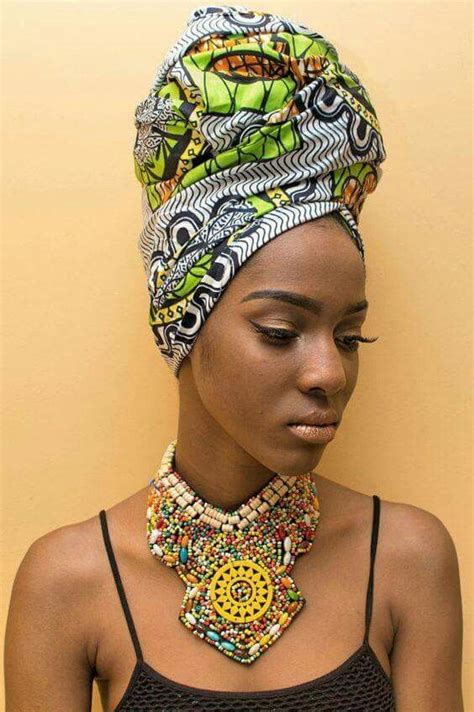#5 Amazing African Head Wraps You Must Know!

Introduction:
African head wraps, also known as Gele, are an integral part of African culture and fashion, symbolizing identity, spirituality, status, and creativity. These vibrant and versatile fabrics come in an array of textures, colors, and styles, captivating the world with their beauty and significance.
1. Gele:
Gele is the most popular type of African head wrap, made from a rectangular fabric that is elaborately pleated and tied into various artistic designs. It is commonly worn by women in Nigeria and other West African countries.
2. Duku:
Duku is a conical-shaped head wrap popular in South Africa. It is made from a piece of fabric that is wrapped around the head and secured with a knot at the top.
3. Turban:
Turbans are head wraps that cover the entire head, wrapping around the neck and sometimes the face. They are often worn by Muslim women as a symbol of modesty.
4. Bandana:
A bandana is a simple square-shaped fabric that is tied around the head or neck. It is popular among both men and women and can be used for protection from the sun or as a fashion accessory.
5. Scarf:
Scarves are rectangular fabrics that can be worn as head wraps or as shawls. They are versatile pieces that can complement any outfit.
1. Identity:
Head wraps often symbolize a woman’s tribe, ethnic group, or cultural affiliation. They convey pride in one’s heritage and a sense of belonging.
2. Spirituality:
In some African cultures, head wraps are believed to connect women with the divine or with their ancestors. They are worn during religious ceremonies and rituals.
3. Status:
Head wraps can indicate a woman’s marital status, age, or social standing. Elaborate and intricate head wraps may signify wealth or importance.
4. Fashion:
African head wraps have become a global fashion trend, admired for their beauty and versatility. They add a touch of elegance and sophistication to any outfit.
1. Protection:
Head wraps can protect hair from the sun, wind, and rain. They can also provide warmth in cold temperatures.
2. Comfort:
Head wraps can be worn on any hair type and texture. They are a comfortable and stylish alternative to hats.
3. Aesthetics:
African head wraps come in a wide range of colors, patterns, and materials, making them a perfect match for any taste or outfit.
4. Confidence:
Wearing an African head wrap can instantly boost confidence and make you feel more beautiful.
1. Practice:
Tying and styling African head wraps requires practice. Don’t be discouraged if you don’t get it right the first time.
2. Choose the Right Fabric:
The type of fabric you choose will determine the drape and style of your head wrap. Consider the weight, texture, and opacity of the material.
3. Experiment with Styles:
There are many different ways to tie an African head wrap. Experiment with different folds, pleats, and knots to find a style that suits you.
4. Accessorize:
You can enhance your head wrap with beads, jewelry, headbands, or other accessories to create a unique look.
5. Confidence:
Wear your head wrap with confidence. It should make you feel beautiful and radiant.
1. Over-Tying:
Avoid tying your head wrap too tightly. It can cause discomfort and damage your hair.
2. Poor Fabric Choice:
Choose fabrics that are suitable for your hair type and weather conditions. Avoid using fabrics that are too stiff or abrasive.
3. Messy Styling:
Take your time and tie your head wrap carefully. A messy or loose wrap can ruin the look.
4. Copying Others:
While it’s great to get inspiration from others, don’t try to copy their exact style. Adapt the ideas to your own personality and preferences.
Pros:
- Cultural significance
- Versatile and stylish
- Protective for hair
- Boost confidence
Cons:
- Can be challenging to tie
- May not be suitable for all occasions
- Can be expensive depending on fabric and design
1. Why are African head wraps important?
Head wraps have cultural, spiritual, and fashion significance, representing identity, status, and creativity.
2. What is the difference between a gele and a duku?
Gele is a rectangular fabric that is pleated and tied into various designs, while duku is a conical-shaped head wrap popular in South Africa.
3. Can men wear African head wraps?
Yes, men can wear African head wraps, although the styles and designs may differ from those worn by women.
4. Is it okay to wear an African head wrap if I’m not African?
Yes, it is acceptable to wear an African head wrap if you’re not African, as long as you approach it with respect and acknowledgment of its cultural significance.
5. How do I protect my hair under an African head wrap?
Use a silk or satin scarf to cover your hair before putting on the head wrap to prevent breakage and tangles.
6. How long does it take to learn how to tie an African head wrap?
Practice and patience are key. With time and effort, you can master the art of tying African head wraps.
Combining the words “wrap” and “dialogue,” we can introduce the term “Wrapalogue” to describe the conversation and exchange of ideas that take place between a head wrap wearer and the people around them. Through their head wraps, wearers can communicate messages, express their identity, and start meaningful conversations.
